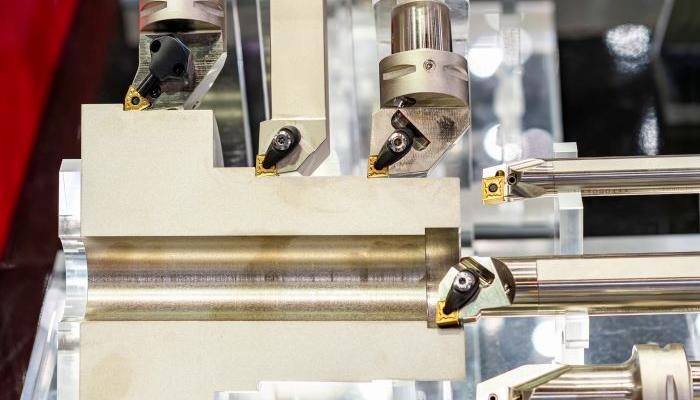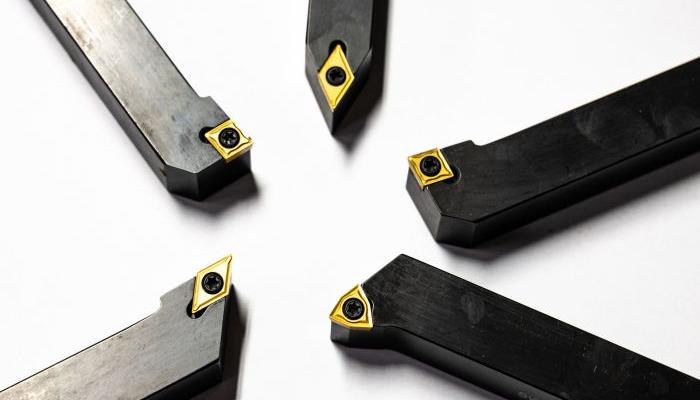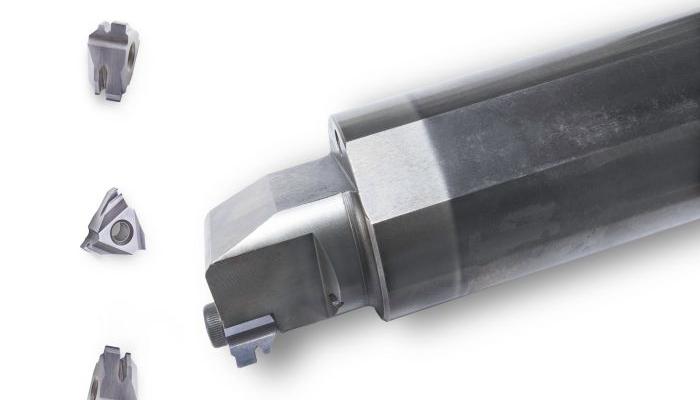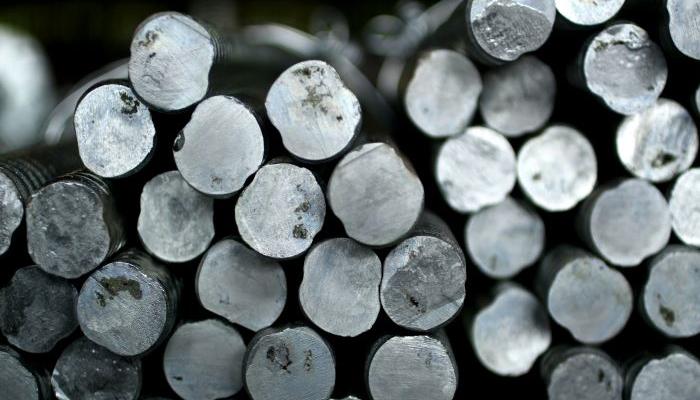
Lathe-cutting tools play a vital role in the lathe manufacturing process. They determine the final prototype part’s accuracy, quality, and finish. High-quality cutting tools are recommended to be made of carbide or diamond.
Turning tools are one of the most widely used tools in CNC machining. As an excellent CNC machining engineer, you must have an in-depth understanding of turning tools.
This article will explore various lathe-cutting tool types and their practical applications.
Lathe Cutting Tools Types- Classified By Processing Method
1. Turning Tools
Turning tools are the most commonly used lathe-cutting tool types. They are used in turning operations, which involve shaping a workpiece (usually cylindrical) to a specific diameter, surface finish, and length.
Turning tools come in various designs, including round noses, square noses, parting off, and threading tools. The tool’s shape and size depend on the workpiece’s size, material, and desired surface finish. Depending on the application, turning devices are usually made of high-speed steel (HSS) or carbide.
2. Boring Tools
Dull tools are used in operations that involve enlarging or creating an internal cylindrical surface in a workpiece. Dull tools are designed to remove material inside the workpiece to make a cylindrical hole with high precision and surface finish. Accelerates the speed of diameter expansion and is suitable for turning large or deep holes.
Dull tools are available in various designs, including roughing, finishing, straight, and angled. The type of dull tool used depends on the size of the workpiece, the material, and the length and finish of the hole required. Dull tools are usually made of high-speed steel or carbide.
3. Grooving and Cutting Off Tools
Grooving and parting off tools involve creating grooves or separating workpieces to form two parts. Grooving tools create grooves in the workpiece surface while parting tools are used to make cuts that divide the workpiece into two components.
Grooving and parting off knives come in various designs, including straight, angled, and round grooving knives, as well as square and diamond-shaped grooving knives.
The size and shape of a grooving or parting tool depends on the size and shape of the groove or cut that needs to be made in the workpiece. These tools are usually made of high-speed steel or carbide.

4. Thread Cutting Tools
Thread-turning tools include internal thread tools and external thread tools. It consists of a tool holder and a blade. The blade surface has a unique shape and is suitable for thread processing of different types of prototype parts.
Thread-turning tools are highly used in machining and have high cutting efficiency. Thread-turning tools are easy to operate and can be used highly repeatedly.
5. Knurling Tools
Knurling is a process that adds knurling to the surface of a part. The knurling tool creates different types of concave and convex patterns along the part’s surface, creating a better gripping surface.
Knurling tools come in various sizes, including diamond and straight knurling. The size of the design part of the knurling tool determines the shape of the knurling. Usually, the knurling tool is made of high-speed steel or carbide.
6. End Cutting Tools
End-cutting tools are used on parts with cylindrical and square end structures for end cutting.
Design of end-face cutters, including single-point and multi-point end-face cutters. The size and shape of the face tool depend on the size of the part contact surface, surface finish, and part material. The material of end-cutting tools is usually high-speed steel or carbide steel.

7. Chamfering Tools
Chamfering tools are suitable for machining bevels or grooves on bolts—Chamfer right or sharp corners of a part. When chamfering is required for mass production, special chamfering tools with side chamfers are needed.
8. Forming Tools
Forming tools are tools used to process different types of part shapes. Use a special cover or bracket to secure the molding tool when in use. It is often used to cut the inner radius, outer radius, and other parts.
9. Back dull Tools
Back boring tools have two radii: 1) create a pre-drilled hole, and 2) create a hole in the part.
10. Reaming Tools
Reaming tools are used for finishing holes and are suitable for parts that require higher hole precision.
11. Drilling Tools
Drilling tools are essential in machining. As the name suggests, drilling tools are required to process holes.
12. Deburring Tools
There are many types of deburring tools. Commonly used ones include files, corner knives, fillet knives, and scalpels. Choose different deburring tools according to different needs.

Lathe Cutting Tools Types – Classification by Material
There are many materials for CNC turning tools, which are selected according to the product structure and the material of the turned parts. Commonly used tool materials include the following.
PCD turning tools
PCD tools, called polycrystalline diamond tools, have good thermal conductivity and are suitable for processing copper, aluminum, and carbon fiber composite materials. PCD is the first choice for drilling, but it cannot process metals containing iron.
CBN turning tools
CBN knives have extremely high hardness and are one of the most wear-resistant. The thermal conductivity of CBN tools is 3.2 times that of pure copper, 25 times that of ceramic tools, and 20 times that of cemented carbide. Suitable for cutting hardened steel, chilled cast iron, and high-speed steel.
High-Speed Steel (HSS)
High-speed steel has high hardness, wear resistance, and heat resistance. It is suitable for materials with hardness within HRC30, such as aluminum, plastic (ABS& POM&PEEK), alloy steel, copper, and other materials.
Carbide
Carbide-cutting tools are made of tungsten cobalt and other metal powders sintered at high temperatures. They have extremely high hardness and wear resistance. They are the first choice for tapping.
They are suitable for materials with a hardness within HRC45, such as stainless steel, ductile iron, and titanium alloys. Superalloy.
Ceramic Turning Tool
Ceramic turning tools have excellent high-temperature hardness and wear resistance, are suitable for high-speed, high-temperature processing, and are usually used for cast iron, high-temperature alloys, and thermal spray materials.
Lathe Cutting Tools Types– Classified by Structure
Integral Turning Tool
Solid turning tools are generally made of high-speed steel. Both ends of the device can be processed. V-shaped forming tools can process outer circles, end faces, and chamfers. This type of tool is more suitable for low-speed turning.
Welding Turning Tool
Welded turning tools are also called carbide welding tools. They consist of a tool handle and a blade, which are fused with copper, including an external thread cutter and cutter.
Indexable Mechanical Clamp Turning Tool
This type of turning tool consists of a tool holder, a blade, a tool grain, and a clamping element. It can flexibly replace the cutting grains and blades and is suitable for processing parts with various structures.
Including grooving tools, internal threading tools, internal hole turning tools, finishing tools, internal grooving tools, and end-face grooving tools.
Lathe Cutting Tools Types- Classified by Feed Direction
Different feeding directions can be divided into three types, namely:
Left-Hand Tool
Left-handed tools remove material from left to right. The cutting edge of a left-handed tool is on the right side of the tool. Suitable for processing the outer diameter of bar stock. Left-hand tools are ideal for machines that run clockwise.
Right-Hand Tool
Right-handed tools remove material from right to left. The cutting edge of a right-handed tool is on the left side of the tool. Right-hand tools are suitable for machine tools with spindles running counterclockwise.
Round Nose Lathe Tools
This tool can move left and right for cutting and is suitable for processing standard surfaces. The surface of the processed parts is smooth.
It is mainly used for rough machining of mold bases, plane finishing, and side finishing. It is more suitable for rough machining of molds with high material hardness.
How to Choose Lathe Tools
There are many types of lathe tools, and experienced engineers will choose the right tool based on various factors. Several factors you must consider when making your choice:
Type of Materials
The material being cut determines the type of lathe tool. Before selecting a turning tool, it is necessary to analyze the part’s material, including material hardness, wear resistance, resilience, and thickness. These properties are fundamental in turning operations.
If the material of the parts to be processed is tough, you need to choose carbide tools or diamond tools.
Tool Shape
The structure of the part determines the shape of the lathe tool. The cutting edge’s position also determines the tool’s cutting direction.
Features of the Part
Different types of lathe tools produce different sizes and shapes. Therefore, you must be very familiar with the parameters of each lathe tool to choose a suitable tool. In CNC machining, more tool combinations are needed for complex parts.

Turning Parameters for Commonly Used Materials
The three cutting elements are feed, cutting speed, and cutting depth.
When selecting the cutting amount, if you consider the processing efficiency, you should first use the maximum cutting depth, then choose a large feed amount, and then select the cutting speed according to the tool’s durability.
From the perspective of processing quality, use a smaller cutting depth and feed rate and a higher cutting speed.
Turning parameters for commonly used materials:
Aluminum: 7075, 6061, 5082, 2024
Line speed 100~150m/min
Feed per revolution 0.15~0.26mm/r
The cutting depth on one side is within 1.5mm
Steel: 1018, 4140, A36 steel, A2 steel, 45 steel
Line speed 80~150m/min
Feed per revolution 0.1~0.4mm/r
Cutting depth on one side is within 3mm
Stainless Steel: 303, 304, 316/L
Line speed 80~130m/min
Feed per revolution 0.1~0.2mm/r
The cutting depth on one side is within 2mm
Copper: C360, Copper 260, C110
Line speed 100~150m/min
Feed per revolution 0.15~0.26mm/r
The cutting depth on one side is within 1.5mm
Plastic: POM, PTFE, PEEK, Nylon, UHMW PE, PC
Line speed 65~100m/min
Feed per revolution 0.3~0.43mm/r
Single side cutting depth 3~5mm
Titanium Alloy
Line speed 50~80m/min
Feed per revolution 0.05~0.15mm/r
The cutting depth on one side is within 0.8mm
Conclusion
Lathe cutting tools are essential tools in turning to process. Mechanical engineers select the appropriate tool type based on the shape and material of the prototype product. Therefore, the variety and quality of cutting tools determine the quality of the product.
Tirapid turns into a variety of materials, whether easily deformed (PTFE&Delrin 150) or titanium alloys. It has rich practical experience and can provide you with more processing technologies.
FAQs
1. What are the common surface coatings for lathe cutting tool inserts?
There are five types of coatings for cutting tools: titanium nitride coating, titanium nitride carbide coating, titanium nitride aluminum or titanium nitrogen aluminum coating, nitrochromium aluminum coating, and diamond coating.
2. How do you choose the common surface treatments for lathe-cutting tool holders?
The surface of the tool is usually electroless nickel-plated or blackened. Electroless nickel plating has strong wear resistance and uniform thickness, ensuring the best accuracy. It is the ideal surface treatment process.
3. Will lathe cutting tools affect the surface finish of the part?
Yes, this is for sure. If the requirements on the part’s surface are too high, then we must choose a tool of appropriate material. For example, if the surface finish is required to reach 0.4μm, Tirapid will choose gemstone blades.
